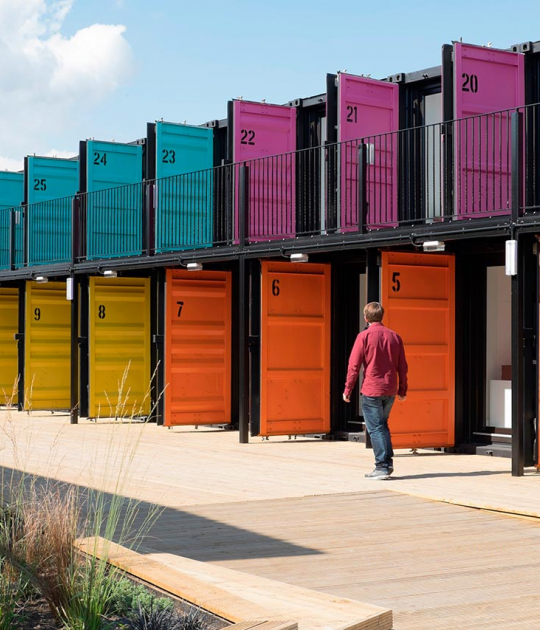The interior layout of the house has a combined living room, kitchen, and dining room, with four bedrooms and three bathrooms. The interiors are bright, with large spaces with natural light. Also, the house incorporates domestic heat recovery systems and solar panels, improving the energy efficiency of the house.
By using the systematization in the construction, the material costs and the execution time of the work are optimal and efficient, obtaining an efficient home in terms of construction, sensitive to comfort, and conscious of the environment.
Description of project by Skylab Architecture
The Taft is a 3,930-square-foot, two-story, open plan house designed and built using HOMB, a prefabricated modular system developed by Skylab in collaboration with MethodHomes. The system provides an alternative to the typical time-consuming process of conventional site construction while also minimizing waste through precision prefabrication.
The house is built using 28 prefabricated modules. Each of the triangular-shaped, structurally independent modules is 100-square-feet in size and features pre-installed finishes and integrated building systems. Capable of a wide range of assembly configurations, when fit together, the modules create a structurally efficient system. For construction, the building components for the house were divided and shipped to the site via a convoy of six trucks, each carrying 600 square foot of prefabricated modular volumes per truck. With the foundation completed prior to delivery, on-site installation was accomplished within a single day.
Situated on a steeply sloping urban infill site, the property is a modest 20-feet-wide. Outside, the house is wrapped with a blackened cedar rainscreen that rests over two inches of rigid insulation plus blown-in insulation within the walls. Inside, the open plan features a combined living, kitchen, and dining area, with four bedrooms and three-and-one-half bathrooms. The interiors are bright, with ample daylit spaces highlighting the exposed timber ceiling and hardwood floors. The bathrooms are lined with a custom hexagon tile and pattern that was set in the shop prior to delivery. Home systems include radiant in-floor heating, a heat recovery system, and a 6-kilowatt rooftop solar array installed on the rooftop. Stormwater from the roof is managed via flow-thru planters that are integrated into the landscape design to minimize site run-off. An additional separate accessory dwelling unit was built as part of a second phase for a home office and storage.
By using a systemized approach, the house supports a high degree of customization while simultaneously minimizing construction time and needless waste. The result is a house that is holistic in its solution, efficient in terms of construction, responsive to comfort, and mindful of the environment.












































